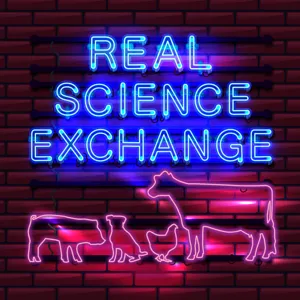December Journal Club: Production effects of extruded soybean meal replacing canola meal in the diet of lactating dairy cows

Dr. Hristov started working with canola meal after he commissioned a review paper comparing canola and soybean meal when he was editor of the Canadian Journal of Animal Science. In that review, most of the studies used solvent-extracted soybean meal. Because canola has a higher oil content, it is always mechanically extruded to remove oil before solvent extraction. This paper is a more fair comparison because both meals were extruded and thus exposed to heat. (7:02)
There were 24 cows per treatment, and it was a continuous study rather than a Latin Square design. No differences were observed in dry matter intake, even though many studies in the literature have shown a higher DMI for canola meal-containing diets. Both diets had similar milk production and feed efficiency. Cows on the soybean meal diet had higher milk fat than canola meal-fed cows. (15:09)
Soybean meal-fed cows had higher total VFA production. Dr. Hristov attributes this to the additional free oil that was added to the canola meal diet having a slightly depressing effect on fermentation. The canola meal-fed cows had a higher proportion of propionate and a lower proportion of acetate than the soybean meal-fed cows. Serum amino acid concentrations were mostly similar with a few differences in individual essential amino acids. (21:40)
Serum glucose concentrations were higher for canola meal-fed cows. Dr. Hristov believes this was probably a result of the increased ruminal propionate since it is a primary precursor for glucose production. He goes on to describe the digestibility results. (28:30)
Bill and Alex discuss the nitrogen excretion data and how low in protein one could go before impacting milk production in an effort to reduce nitrogen excretion to the environment. (37:06)
Dr. Hristov’s take home message is when you are comparing these two feed ingredients in similar diets, if feed intake is not affected you'll have a similar response between extruded soybean meal and canola meal. Comparing solvent-extracted soybean meal with canola meal is not a fair comparison. (51:05)
The paper can be found here: https://www.sciencedirect.com/science/article/pii/S0022030223004101
Please subscribe and share with your industry friends to bring more people to join us around the Real Science Exchange virtual pub table.
If you want one of our new Real Science Exchange t-shirts, screenshot your rating, review, or subscription, and email a picture to anh.marketing@balchem.com. Include your size and mailing address, and we’ll get a shirt in the mail to you.